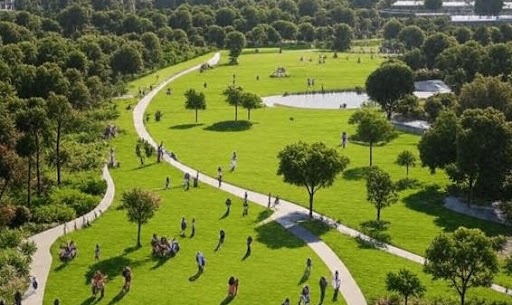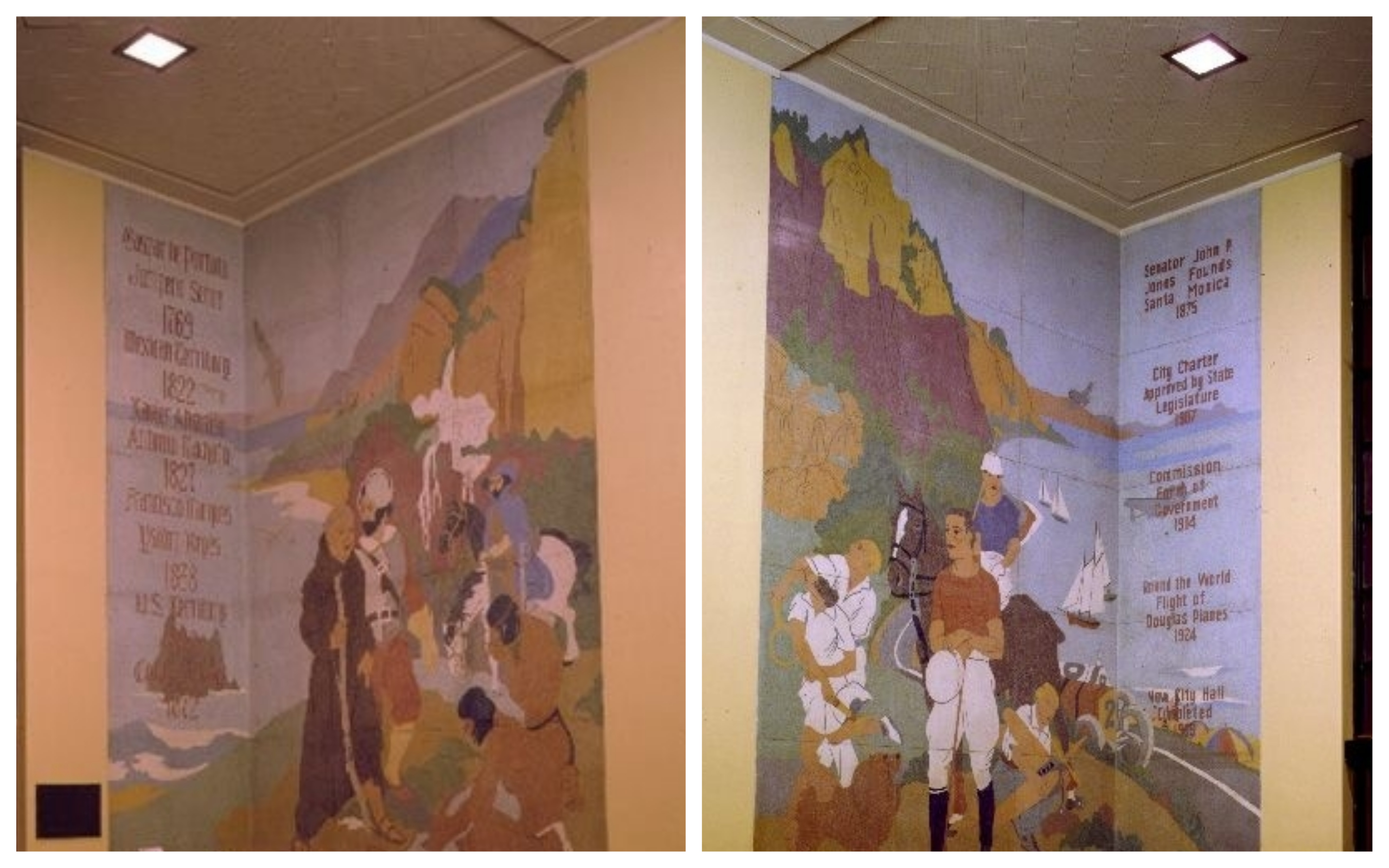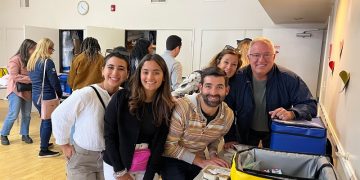
“As the City is broke and on the edge of bankruptcy, proponents seem to suggest starting simply—create walking paths, install basic amenities, plant shade trees, and wait for a generous philanthropist to fund the full transformation.” writes Bob Taylor
While Santa Monica residents and visitors already enjoy miles of a “Great Beach Park” that offer families space to breathe and children to play, and attracts people and families from throughout the region, and is already paid for, airport closure advocates, nonetheless, have a romantic vision of transforming the airport into a “Central Park”, “offering families space to breathe, children room to play, in an increasingly dense urban environment.” As the City is broke and on the edge of bankruptcy, proponents seem to suggest starting simply—create walking paths, install basic amenities, plant shade trees, and wait for a generous philanthropist to fund the full transformation.
That ‘unknown philanthropist’ would have to pay for a site that is larger than all of downtown, from the Freeway to Wilshire and Ocean Ave to Lincoln – which is about 228 acres.
In addition, the so-called ‘great park’ vision of closing the airport collides with the harsh realities that the site would require extensive environmental remediation, potentially costing tens of millions of dollars before a single tree can be planted. And more critically, California’s housing laws have fundamentally altered what cities can and cannot do with valuable land, especially coastal property near job centers and transit.
The Measure LC and the Misunderstanding
Many residents believe that Measure LC mandated closure and park use for the site. It did neither. The measure simply vests the City Council with the authority to continue airport operations, or to cease airport operations, and if closed, determine how the land will be utilized after Jan 1, 2029. LC is not limited to only a park, but also to educational uses, e.g. SMC (Santa Monica College)expansion and student housing, as well as replacement of existing facilities with no stated limits on what replacement actually means, which suggests the existing commercial uses could be significantly enlarged by being replaced.
Closure advocates cannot assume that their support for a park will automatically translate into park development. The Council must weigh legal constraints, financial realities, developer pressures, and state mandates—a balancing act that will doubtless produce outcomes different from what closure advocates expect, as we have already seen 2 of the 3 concepts authorized by the council include mass housing. The council was delinquent in not mandating a fourth concept – that of keeping the airport functional and providing the public with the economic benefits and open space it already provides.
HR&A, the city’s economic analyst consultant, in their 2011 report indicated that SMO contributed $275mil/yr to the Santa Monica economy – that is $391mill/yr adjusted for inflation. Instead of benefiting the city’s economy, the council began to put a knee on the neck of airport operations and has been slowly strangling it for the past 10years, contributing, it would seem, to the financial crisis the city finds itself in.
The State’s Housing Mechanism
Under California’s Regional Housing Needs Allocation (RHNA) process, Santa Monica must accommodate thousands of new housing units over the next decade. The state has made clear that cities failing to meet these obligations will face the Builder’s Remedy—a legal mechanism that allows developers to bypass virtually all local zoning and approval processes, a complete loss of local control, negating any notion that LC is a safeguard. The airport land sits squarely in the crosshairs of this policy framework.
If Santa Monica closes the airport but fails to meet housing targets elsewhere, developers could invoke the Builder’s Remedy to build on the airport land anyway—but without any community input on design, density, or public benefits. An irresponsible gamble for a city facing fiscal crisis.
The Path Forward: Getting Real
Instead of the city having constrained the economic contribution of the airport, the airport can once again function as an economic solution to the fiscal losses incurred by the city over the last 15 or so years, while maintaining the open space that the airport has always provided by its mere function. And with the increase in electric aircraft coming available, the airport will likely generate much less noise than even our boulevards. The key is proactive planning rather than reactive resistance.
How Residents May Influence Outcomes
Given that the City Council holds ultimate decision-making authority over the airport’s future, public engagement becomes even more critical. Residents who care about the airport’s future and believe that it will be closed and a park built in its place should focus their advocacy on the economic and environmental realities rather than impossible dreams, Recognize the need for parks that serve your neighborhood – accessible within a 10 to 15 ‘minute walk from your homes, not tucked in the farthest corner of the city with limited access which is likely to end up, in reality, as a significant housing/commercial development with minimal open space.
Residents should advocate for maximum neighborhood park space within a financially viable framework. Demand excellent design standards, and insist on community benefits that serve existing residents alongside new ones. Support innovative tax policies that can fund neighborhood parks throughout the city while addressing speculation and inequality, that capture some of the value created by Santa Monica’s desirability as a place to live.
Our Window Is Closing
The next few years represent Santa Monica’s last opportunity to influence what happens at the airport site. Waiting for perfect solutions, or for a ‘benefactor’, or hoping that legal challenges will preserve unlimited local control wastes precious time that could be spent crafting thoughtful neighborhood park alternatives.
Most importantly, it depends on recognizing that Measure LC merely enabled four members of the city council, i.e. a council majority, to decide whether to maintain airport operations, or to cease airport operations, it did not predetermine the land’s future use as a park. The clock is ticking, and the stakes have never been higher. The choice is stark: maintain the airport as a functional open space with proven economic benefits, or trigger a state-mandated housing development process that could transform the site into dense residential towers with minimal parkland. The decision rests with just four council members, and the window for public influence is rapidly closing
Bob Taylor, AIA
For SMa.r.t.
Santa Monica Architects for a Responsible Tomorrow
Dan Jansenson, Architect, (ex-Building & Fire-Life Safety Commissioner); Robert H. Taylor, Architect AIA; Thane Roberts, Architect; Mario Fonda-Bonardi, Architect AIA (ex-Planning Commissioner); Sam Tolkin, Architect, (ex-Planning Commissioner); Michael Jolly ARECRE; Jack Hillbrand AIA, Landmarks Commissioner Architect; Mat Hoefler, Architect NCARB













